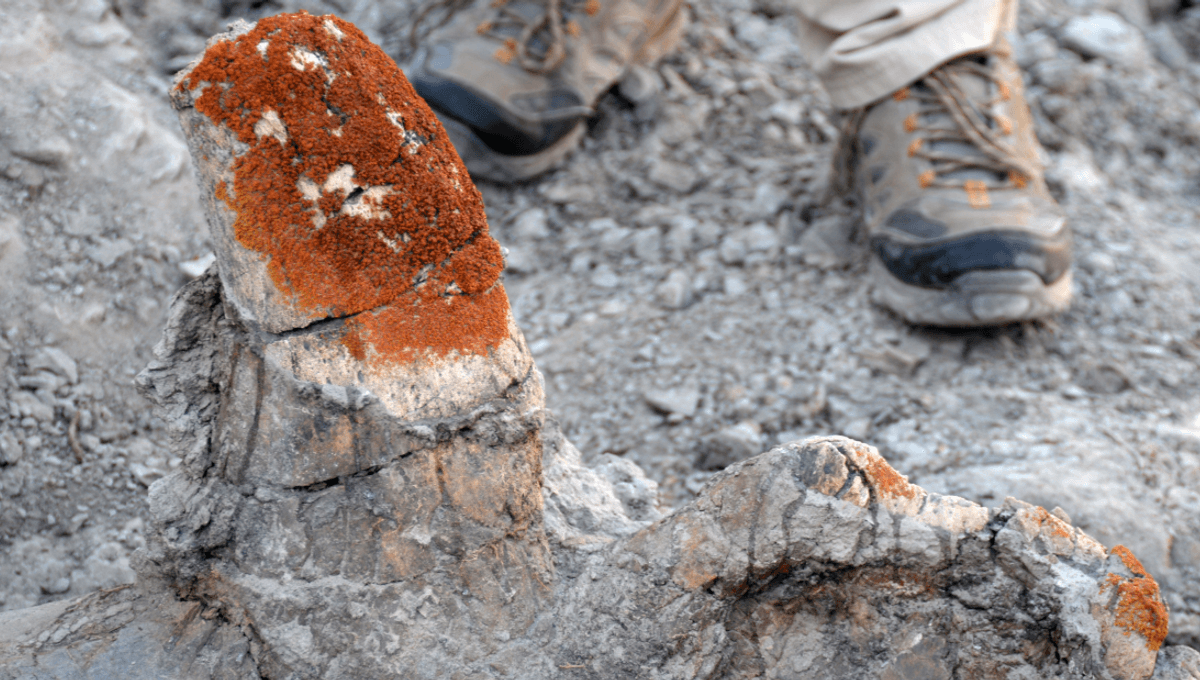In what might be the coolest solution to "how to find fossils", a new study has revealed how we can take to the skies when trying to find dinosaur remains all thanks to vibrant orange-colored lichens. Two species (Rusavskia elegans and Xanthomendoza trachyphylla) were found to grow across as much as 50 percent of exposed fossil bones, but only grew on less than 1 percent of the surrounding rock fragments.
The rest of this article is behind a paywall. Please sign in or subscribe to access the full content. Searching for exposed fossils in the landscape? You need only follow the orange-rocked road. Lichens aren’t a singular organism but instead a hybrid colony of algae or cyanobacteria living among a fungus. They’ve been known to grow on everything from delicate rock art to human skulls (hello usnea), and it turns out they’ve got a taste for dinosaur bones, too. "This pattern of lichen growing preferentially on fossil bone has been noted for decades, but never quantified until now," said Dr Caleb Brown, from the Royal Tyrrell Museum of Palaeontology, Canada, in a statement. "When first encountering high concentrations of exposed fossil bone like bonebeds, it is often the ‘meadow’ of orange lichen that is noticed first, not the bones themselves." A team set out to investigate the phenomenon further at the UNESCO World Heritage Site Dinosaur Provincial Park in Alberta. Here, armed with remotely piloted aircraft systems (AKA drones), they flew across the landscape in search of lichen-colonized fossils. As you can see, the lichens are quite picky. Image credit: Dr Brian Pickles, University of Reading Their efforts revealed they could find fossils while flying through the air by snapping aerial images with 2.5-centimeter (0.98-inch) pixel resolution. The lichens themselves can be brightly colored, but special sensors made it easier to identify patches as they exhibited distinct spectral properties, with lower reflectance in blue wavelengths and higher reflectance in infrared regions. Flying high in the sky might seem like overkill for something we can find on foot, but there are many potential benefits to using drones to zoom off to where our human feet may struggle to follow. As such, it's hoped the discovery could rapidly speed up future fossil hunts in remote regions, reducing field costs and even the environmental impact of expeditions. "This research highlights how modern organisms can help us to find ancient ones,” added lead author Dr Brian Pickles from the University of Reading, UK. “It's remarkable to consider that these lichens, essentially miniature ecosystems, are founded upon the remains of dinosaurs that died over 75 million years ago. Using drone technology to detect the spectral signatures of the lichens could potentially revolutionise how palaeontologists search for fossils." The study is published in the journal Current Biology.What are lichens?
Lichen-colonized fossils

Fossil hunting of the future






